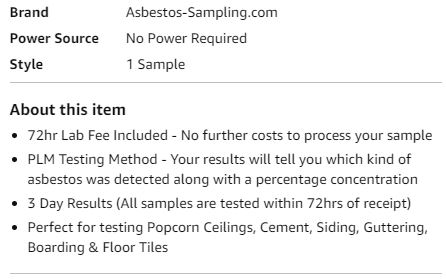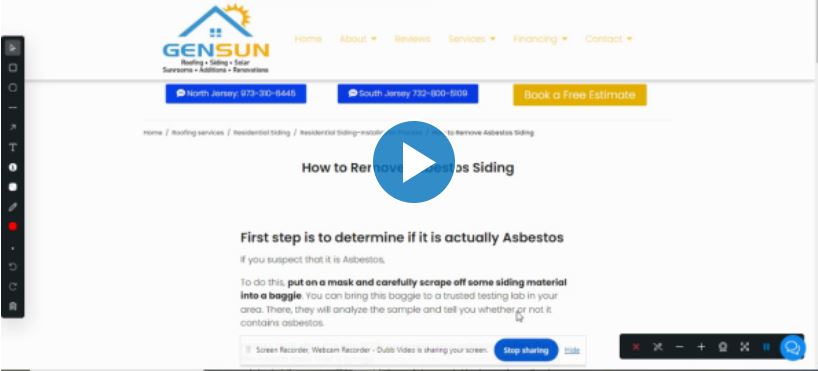First step is to determine if it is actually Asbestos
If you suspect that it is Asbestos,
To do this, put on a mask and carefully scrape off some siding material into a baggie. You can bring this baggie to a trusted testing lab in your area. There, they will analyze the sample and tell you whether or not it contains asbestos.
Homes built after the late 1970s no longer used asbestos siding due to the health risks that it brings. However, older homes that still have their original siding may still have this harmful material in them. If you live in an older home and are concerned that it may have asbestos siding, you need to know how to identify it. By now, you may be wondering what does asbestos siding look like? After all, if you are going to identify asbestos siding in your home, you need to know what you are looking for. Today we will dive into how you can identify asbestos siding quickly and effectively at home.
HOW TO IDENTIFY ASBESTOS SIDING
If you think that you may have asbestos siding, you may be wondering how you can identify it. There are a few different ways to identify asbestos siding, but remember that it was created to look like safer alternatives and can be challenging to recognize. This said, here are some ways that you can identify asbestos siding on your home.
DETERMINE THE AGE OF YOUR HOME
The first step to identifying whether or not your home has asbestos is to check the age of the building. Typically, homes built after the late 1970s or early 1980s will not have to worry about asbestos siding as it was discontinued due to health concerns. However, if your home is built before or during those years, you may have asbestos in your siding.
INSPECT YOUR SIDING
If your home is constructed before 1980 or you are still suspicious of your siding containing asbestos, the next step is to go outside and inspect the siding. You will be looking for any of the following criteria as they may mean that your siding contains asbestos.
- Fibers in your siding that appear “ropey” or “curling”
- Two or three nail holes at the bottom of each panel (this could be hard to determine if you have layer or 2 of paint)
- A pressed woodgrain pattern or a wavy pattern at the bottom of each panel
- Each piece of siding is a 12-inch by 24-inch shingle (keep in mind that wood shakes come up to 18″)
- The texture appears chalky
- It has a company label that says “asbestos” on it
TAKE A SAMPLE FOR TESTING
BEWARE OF WHO YOU USE FOR OPINION!
CONCLUSION
While newer homes may not have to worry about asbestos siding, older builds could be at risk for asbestos siding. Asbestos can be harmful and should not be left on your home, but identifying it can be challenging to do on your own. So, if you are worried about asbestos siding on your home, reach out
WHAT TO DO:
1. Install vinyl siding over the asbestos. Most cost effective due to remediation but there are draw backs
2. Remediate via the contractor (make sure you get permits from the town and it is quite a process!)
3. Remediate via a profession remediation company and you can rest assured everything is done safely and professionally. this is a very expensive process, however



